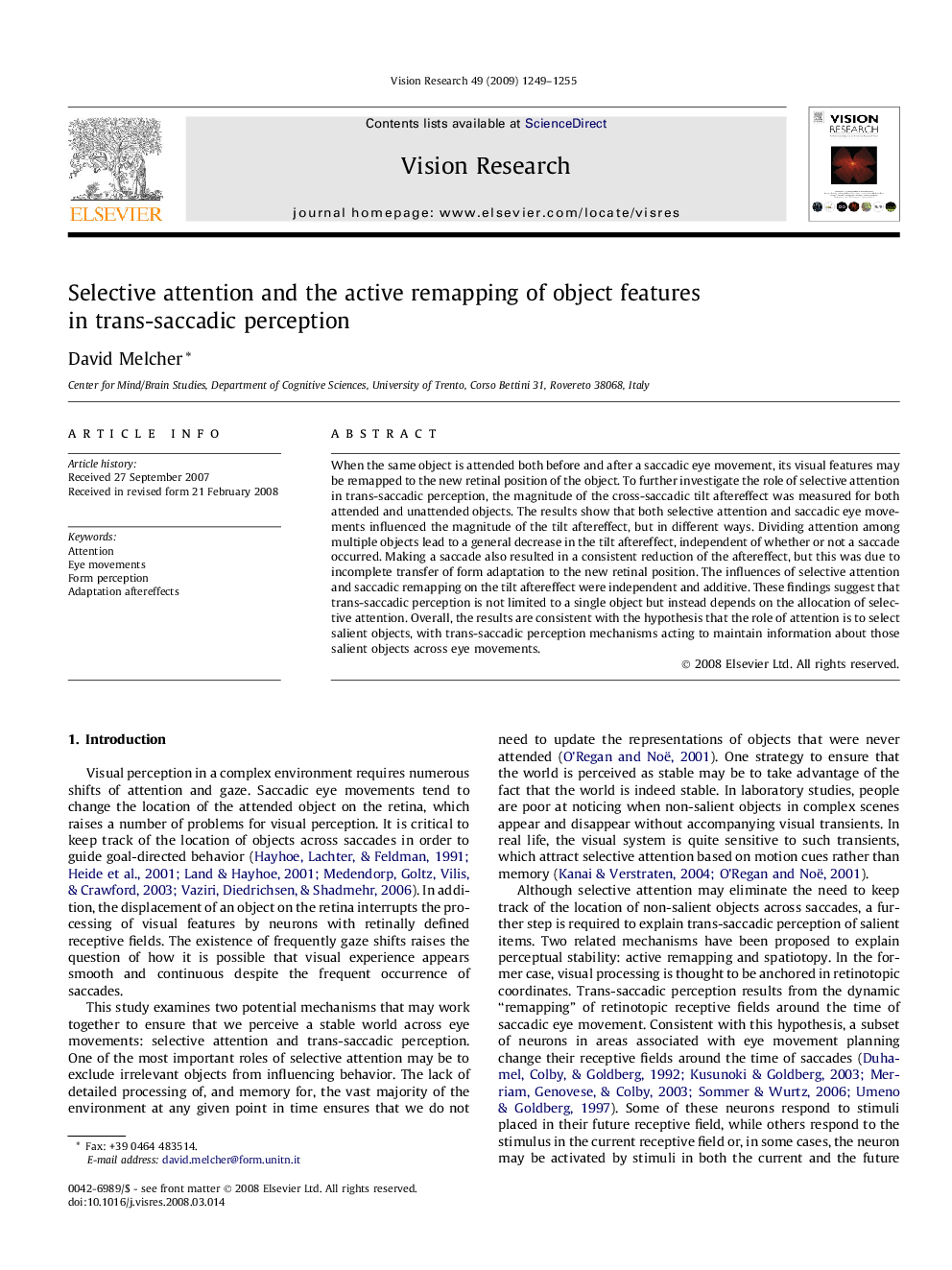| Article ID | Journal | Published Year | Pages | File Type |
|---|---|---|---|---|
| 6203878 | Vision Research | 2009 | 7 Pages |
When the same object is attended both before and after a saccadic eye movement, its visual features may be remapped to the new retinal position of the object. To further investigate the role of selective attention in trans-saccadic perception, the magnitude of the cross-saccadic tilt aftereffect was measured for both attended and unattended objects. The results show that both selective attention and saccadic eye movements influenced the magnitude of the tilt aftereffect, but in different ways. Dividing attention among multiple objects lead to a general decrease in the tilt aftereffect, independent of whether or not a saccade occurred. Making a saccade also resulted in a consistent reduction of the aftereffect, but this was due to incomplete transfer of form adaptation to the new retinal position. The influences of selective attention and saccadic remapping on the tilt aftereffect were independent and additive. These findings suggest that trans-saccadic perception is not limited to a single object but instead depends on the allocation of selective attention. Overall, the results are consistent with the hypothesis that the role of attention is to select salient objects, with trans-saccadic perception mechanisms acting to maintain information about those salient objects across eye movements.
